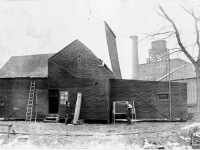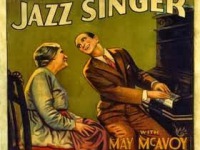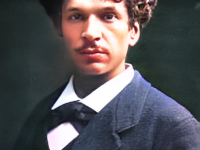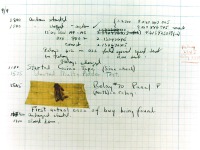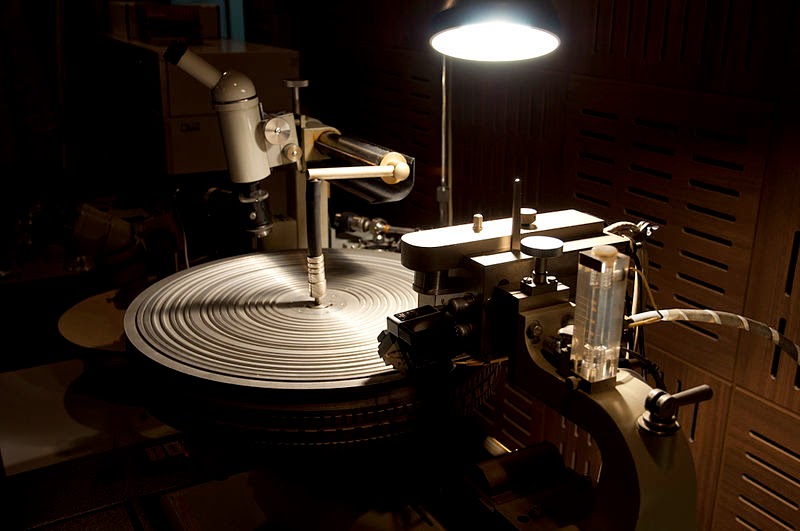
Neumann Record Cutting Machine
On June 21, 1948, Columbia Records introduced the long-playing record album, in short the LP, in a public demonstration at the Waldorf-Astoria Hotel in New York, New York, which soon was adopted as a new standard by the entire record industry. Apart from relatively minor refinements and the important later addition of stereophonic sound capability, it has remained the standard format for vinyl “albums”.
It all starts with the Player Piano
To take a look at the origins of the LP, we must start with the player piano. It was a self playing piano with a pneumatic or electro-mechanic mechanism operating the instrument with programmed music. The music was mostly ‘written’ on perforated paper or metallic rolls. It became very popular in American households, even though it was not able to play emphasized notes intended by the artist. In 1877, Thomas Edison published his idea on the phonograph, which made him famous. It contained a wax cylinder driven by a mechanical motor.[3] An acoustic playback head then picked up different depths converting them into acoustic energy. About ten years later, a revolutionary change hit the “record industry”. Emile Berliner knew about the many limitations, the cylinders had in the sense of quantity and usability. He decided to build a flat disc on which the grooves were pressed. In 1897 he was granted his first patent for what he called the “Gramophone“. However, development went further and in 1946, the very first LP was produced, but it took further changes , since many issues in equalizing the inner grooves, vinyl formulations and many others still appeared.
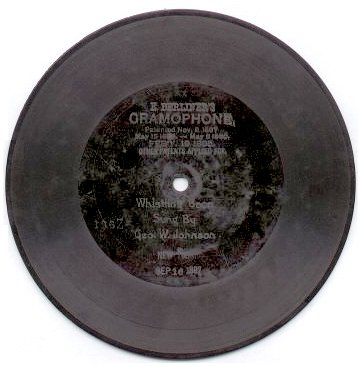
1897 Berliner Gramophone record
How to make Discs to play Longer
The prototype of the LP was the soundtrack disc used by the Vitaphone motion picture sound system, developed by Western Electric and introduced in 1926. For soundtrack purposes, the less than five minutes of playing time of each side of a conventional 12-inch 78 rpm disc was not acceptable. The sound had to play continuously for at least 11 minutes, long enough to accompany a full 1,000-foot (300 m) reel of 35 mm film projected at 24 frames per second. The disc diameter was increased to 16 inches (40 cm) and the speed was reduced to 33 1⁄3 revolutions per minute. Unlike their smaller LP descendants, they were made with the same large “standard groove” used by 78s. Unlike conventional records, the groove started at the inside of the recorded area near the label and proceeded outward toward the edge. However, by mid-1931, all motion picture studios were recording on optical soundtracks.[4]
From Movie Soundtrack Disc to Syndicated Radio Program
Syndicated radio programming was distributed on 78 rpm discs beginning in 1928. The desirability of longer continuous playing time soon led to the adoption of the Vitaphone soundtrack disc format. 16-inch 33 1⁄3 rpm discs playing about 15 minutes per side were used for most of these “electrical transcriptions” beginning about 1930. Longer programs, which required several disc sides, pioneered the system of recording odd-numbered sides inside-out and even-numbered sides outside-in so that the sound quality would match from the end of one side to the start of the next. Initially, transcription discs were pressed only in shellac, but by 1932 pressings in RCA Victor’s vinyl-based “Victrolac” were appearing. Other plastics were sometimes used. By the late 1930s, vinyl was standard for nearly all kinds of pressed discs except ordinary commercial 78s, which continued to be made of shellac.
How the Vinyl LP was invented
CBS Laboratories head research scientist Peter Goldmark led Columbia’s team to develop a phonograph record that would hold at least 20 minutes per side. Research started in 1941 and was resumed in 1945 due to the difficulties during World War II. With the shortage of shellac during the Second World War, the use of vinyl was accelerated, e.g. with the V-discs of the US army. The material allowed for much narrower grooves (microprinting) than shellac. Smaller styli were used and there was a significant increase in both sound quality and playing time. When the LP was introduced, the first two long-players were Frank Sinatra’s The Voice and Mendelssohn’s Concerto in E Minor. The LP immediately succeeded. It was a perfect format for Broadway musicals, and shows like My Fair Lady and South Pacific boosted the distribution of the new format. To the LP’s success also belonged the fact that smaller labels were able to produce and distribute music with a high quality sound without a high technology studio. This paved the way for independent bands and helped the music industry to broaden with a greater variety of music styles.
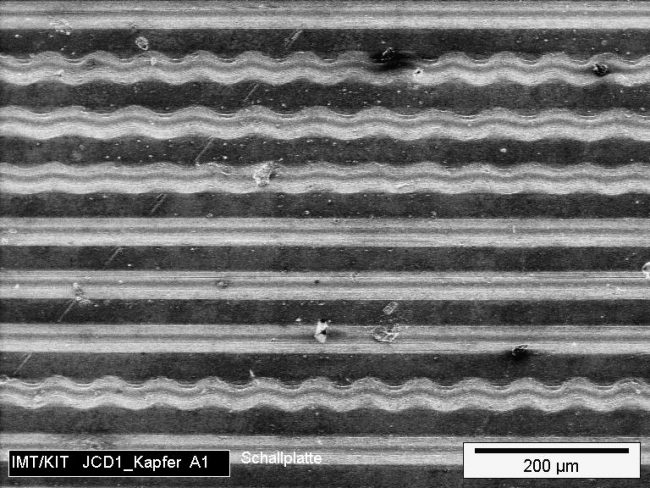
LP under the microscope
The Battle of the Speeds
On 21 June 1948 Columbia Records introduced the 12-inch (30 cm) LP with 33⅓ min-1 and a small center hole (7 mm), which had been developed by Peter Goldmark. In 1949 RCA Victor followed with the 7-inch (17.5 cm) record with 45 min-1 and large center hole (1½″ or 38.1 mm). The decision for this format was based on the consideration that almost all pieces of music can be sensibly divided into movements of approximately 5 minutes. In order to achieve total playing times comparable to those of the LP, automatic record changers were offered for this format. As was already the case with shellacs in a similar form, the records were to be sold in a book-like packaging with several individual records, which is why the term “album” is still used today. Common to both formats was the use of PVC as the record material and the micro-groove. Both formats were initially marketed in competition with each other. At that time, record players only mastered one of the two formats, so that consumers had to make up their minds, which led to uncertainty among customers. It was a classic example of a format war, also known as the Battle of the Speeds.
Further Developments
The advantage of the LP was, of course, its playing time. An average LP has approximately 460m of groove on each side. Some bands began to play ‘tricks’ on the LP like the Beatles. Their track A Day in Life is located at the end of the Sgt. Pepper’s Lonely Hearts Club Band album and runs a continuous loop unless the player is turned off. As early as 14 December 1931, the engineer Alan Dower Blumlein invented the method still used today for recording and reproducing two channels in a groove. The commercial introduction of the stereo record, however, did not take place until 1958 by Mercury Records.
HISTORY OF VINYL RECORDS #2 – The 33 1/3 RPM Long Play, [6]
References and Further Reading:
- [1] Dreams of Vinyl – The story of the LP (long playing) record by Jac Holzman
- [2] Vinyl records and Turntables are gaining Sales
- [3] Mary had a Little Lamb – Edison and the Phonograph, SciHi Blog
- [4] You Ain’t Heard Nothin’ Yet – The Movies started Talking, SciHi Blog
- [5] LP record at Wikidata
- [6] HISTORY OF VINYL RECORDS #2 – The 33 1/3 RPM Long Play, 1956, Default Name @ youtube
- [7] Timeline of data storage devices, via Wikidata

